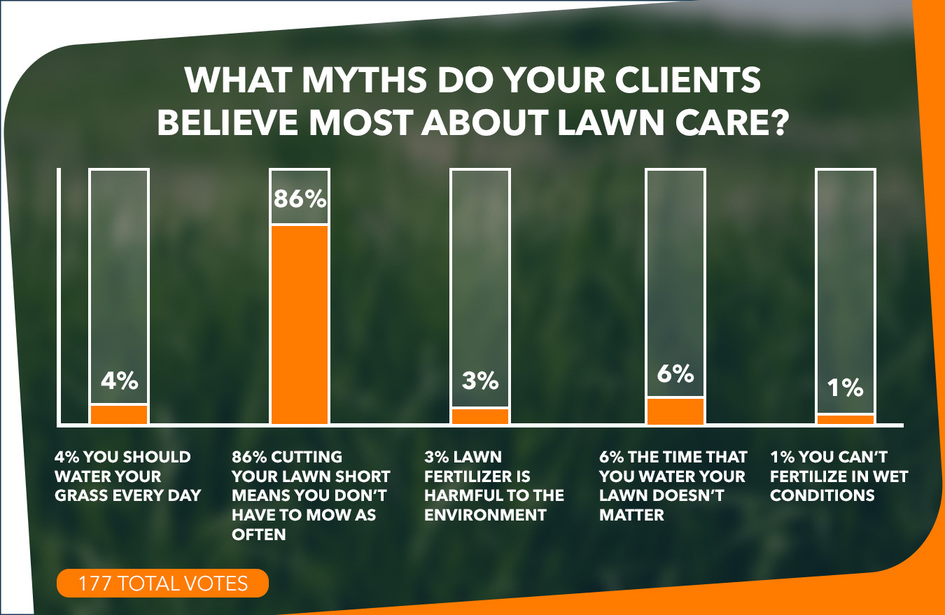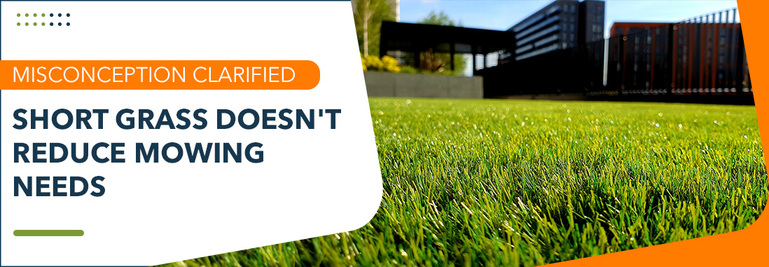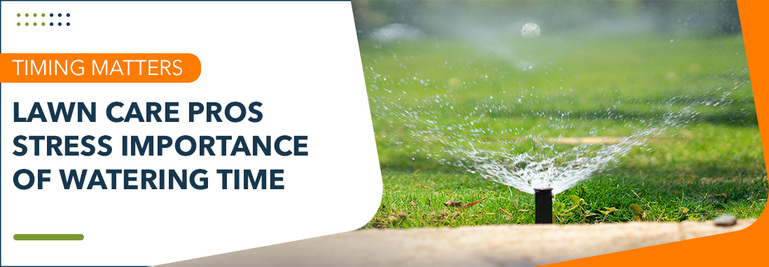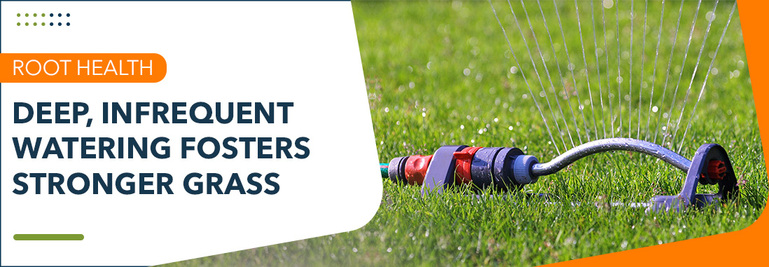Top 5 Lawn Care Myths
With over two decades of industry experience, I’ve been able to see all of the best and worst practices in lawn care. Today, I want to dispel some of the top myths and misinformation that surrounds lawn care.
Lawn care professionals have the most knowledge and experience on how to properly care for a lawn. So, I took a poll of pros from around the country to find out what the biggest lawn-care myths are.
They were asked to vote on which myth they encounter most frequently with their clients. This method allows for a simple majority vote to identify the most prevalent myths among homeowners, as perceived by the professionals. 
The results of the poll reveal which of these myths is most widely believed. With over 175 votes at the time of writing, I was able to receive a good sample size to determine which habits and myths you should change immediately.
Let’s find out which lawn care myths are most common.
Myth 1: Cutting your lawn short means you don’t have to mow as often
This was by far the biggest myth according to lawn care professionals — 86% of votes were cast for this option.
Many homeowners believe that if they cut their grass shorter, then they won’t have to mow as often. This may technically be true, but there is more to consider than just mowing frequency.
Low mowing heights reduces the density of your grass, giving weeds and crabgrass the sunlight they need to move in. In addition, mowing too low will make your lawn more prone to the stresses of summer heat.
In general, cool-season grasses are healthiest when they are cut around 3 to 4 inches high. This includes bluegrass, ryegrass, and fescue.
Warm-season grasses perform best when cut around 2 to 2.5 inches. This is a good guideline for bermudagrass, zoysiagrass, and other summer lawns.
Exact lengths may differ based on temperature, season, type of grass, and other factors.
It can be tempting to mow less often, but your lawn health will likely suffer.
Myth 2: The time that you water your lawn doesn’t matter
This myth had the next-highest vote in our polling of lawn care professionals. They made it clear that the time that you water your lawn does matter.
According to most lawn care experts, the best time to water is the early morning – between 6 and 9 AM. This allows the water to soak in before the heat of the day hits your lawn.
If you are concerned about saving even more water, you can water at night. This way, all of the water is able to soak into the ground before the sun comes out the next morning.
However, this night-time method of watering has a higher risk of grass diseases. When water is left to sit overnight, droplets may cling to the grass and cause issues.
The middle of the day is generally considered the worst time to water a lawn. The grass will not be ready to absorb the moisture in the heat of the day. Also, some of your water might be lost to evaporation.
As you can see, the time that you water your lawn definitely matters.
Check out our water saving guide for more tried-and-true lawn and garden watering tips.
Myth 3: You should water your grass every day
Should you water your grass every day? The lawn care professionals that we polled deemed this idea a myth. They agreed that in most cases, you should not water your lawn every day.
It’s easy to see how this myth has spread — a lawn needs water, right? Why not water every day?
As with most plants, deep but infrequent waterings are preferred over shallow, daily waterings. In general, you should be watering your lawn every 2 to 3 days. This will inevitably vary based on region, temperatures, and type of grass.
When you provide deep, infrequent waterings, the moisture is able to penetrate into the ground and avoid evaporation. The grass roots are then encouraged to grow deeper, promoting a healthier lawn.
Shallow and frequent waterings promote poor root structure and disease.
Following these guidelines will increase the health of your lawn, as well as help you save on your water bill.
Myth 4: Lawn fertilizer is harmful to the environment
Lawn fertilizer is not inherently bad for the environment. However, when naive homeowners (or professionals) apply it incorrectly, then it can do harm to the surrounding environment.
There are a few things to avoid when it comes to fertilizer application:
Amount: This is the biggest mistake that most homeowners make. More fertilizer does not equal a healthier lawn. Too much fertilizer can lead to nutrient burn for your grass. Plus, the excess fertilizer could run off into the surrounding environment.
Frequency: If you fertilize too often, you risk damaging your lawn and the surrounding ecosystem. In general, you should be fertilizing every few months to maintain a healthy lawn.
Waterways: Consider where your fertilizer may run off. If that path is into a local river or watershed, you should be extra careful about the amount and frequency of fertilizer that you apply.
If you follow the above guidelines, you can help dispel the myth that fertilizer is bad for the environment.
Myth 5: You can’t fertilize in wet conditions
This is a tricky one, and is related to our previous myth that lawn fertilizer is harmful to the environment.
In mildly wet conditions, you can certainly fertilize your lawn. In fact, some types of fertilizers need to be “watered in” for maximum effectiveness.
However, if you’re considering fertilizing right before a heavy storm — think again. A heavy rain can wash away much of the fertilizer, which could lead to environmental concerns as well.
For more details, check out our lawn fertilization guide.
Don’t Believe the Myths
Let’s recap what we have learned. Our poll of lawn care professionals brought our attention to these 5 lawn care myths:
Cutting your lawn short means you don’t have to mow as often.
You should water your grass every day.
The time that you water your lawn doesn’t matter.
Lawn fertilizer is harmful to the environment.
You can’t fertilize in wet conditions.
If you can avoid these bad habits and practices, your lawn should be looking better than ever.
Quick Summary: Top 5 Lawn Care Myths
Myth |
Reality |
Cutting your lawn short means you don’t have to mow as often. |
Cutting too short can harm grass, leading to more frequent mowing and weed growth. |
The time that you water your lawn doesn’t matter. |
Morning watering allows optimal absorption; nighttime watering risks disease. |
You should water your grass every day. |
Deep, infrequent watering promotes healthier root growth; daily watering promotes disease. |
Lawn fertilizer is harmful to the environment. |
Correct application and consideration of runoff minimize environmental impact. |
You can’t fertilize in wet conditions. |
Lightly wet conditions allow for fertilization; heavy rain can wash away fertilizer. |
If you don’t want to wade through all of the myths, you can also hire a lawn care professional. GreenPal has landscapers all over the country — from Los Angeles, CA, to De Soto, TX, and Lexington, KY. Get quotes from top landscapers in your area in just minutes.





 Share
Share










